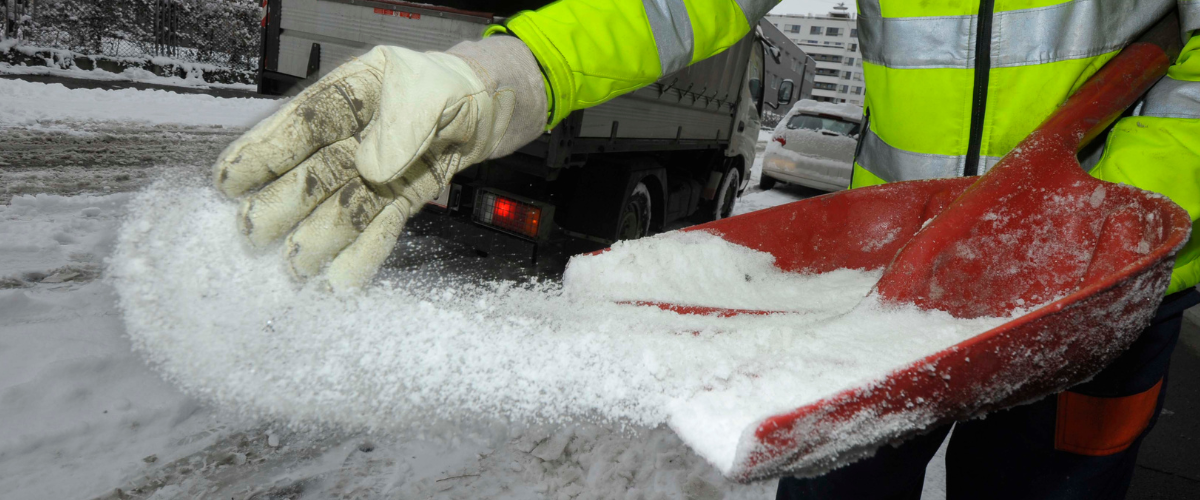As temperatures drop across the country, employers are reminded of their responsibilities to keep their workers safe if they’re working in cold weather conditions.
Who does cold weather affect?
There are many jobs and industries that cold weather working impacts and many roles will be much more difficult to undertake in cold weather conditions.
The good thing is most employers recognise this and make adjustments. However, every year the temperature drops, the question of ‘is it too cold to work’ always gets raised.

When people work in uncomfortably cold conditions, they are less likely to perform to your expected standards which can lead to safety issues because their ability to make safe decisions deteriorates.
It’s important for employers to review their preventative measures and consider putting more in place when the temperature drops. The first step is to identify workers who will be at risk and may need extra protection – for example a construction worker completing road works during the winter may experience below freezing temperatures throughout the day. That’s a long shift to be cold!
In particular, hands and feet can become cold and painful and, in some cases, lead to chilblains or even frostbite, whilst lower body temperatures lead to slow response times and an increase in accidents.
Along with the cold, you also need to factor in windchill and wet weather conditions which can all contribute to uncomfortable working conditions and lead to health problems.
Indoor minimum working temperature
There’s no law determining the minimum or maximum working temperatures, due to the nature of some working environments. For example it may get very hot in a manufacturing plant or very cold in a frozen food processing factory.
However, for indoor working, the HSE says that the minimum indoor working temperature should be 16°C or if the work involves rigorous physical effort, 13°C.
Get answers to your Health & Safety challenges, giving you the confidence to manage workplace compliance effectively.

Outdoor minimum working temperature
The HSE don’t provide a minimum outdoor working temperature, however, they do provide guidance on cold stress and protecting workers from the cold.
You should monitor how workplace temperature affects your workers as part of your risk management, and if workers are complaining or reporting illness, it’s time to review your risk assessment and put more controls in place.
- Provide appropriate PPE clothing to protect from the cold
- Provide adequate workplace heating and warm spaces i.e. portacabins on site
- Reduce exposure to the cold by reviewing your processes to minimise exposure to the cold – this could include more regular breaks in heated areas and more time to get hot drinks.
Don’t forget about slip hazards in the cold
When the temperature drops, ice forms and roads and paths become slippery increasing the risk of slips and trips injuries. Coupled with the shorter days and less light more accidents can occur.
- Ensure pathways have enough lighting to allow easier hazard spotting.
- Identify key areas where ice is a problem i.e. car parks, building entrances, walkways.
- Monitor the temperature and use grit (or similar) before frost, snow or ice is forecast. This stops ice from forming in the first place. The best time to carry this out is early evening and early morning because it doesn’t work instantly – salt needs time to dissolve into the moisture on the ground.
Speak to an expert today
Our qualified health & safety advisors are able to act as your Competent Person, review your risk assessments and provide advice relating to cold weather working.
Find out how we can support you and your team, speak to an expert today on 01622 47 41 49 or emailing info@primed.co.uk.
For advice, support and guidance speak to an expert today
Support managing Health & Safety
Our health & safety consultants are highly experienced, with a range of practical experience and can help your business comply with health & safety legislation.
- Access to a Competent Person
- Qualified consultants with recognised qualifications
- Tailored response to your business & circumstances
- Approved training provider (IOSH, NEBOSH, Highfield, CIEH, BSC)










